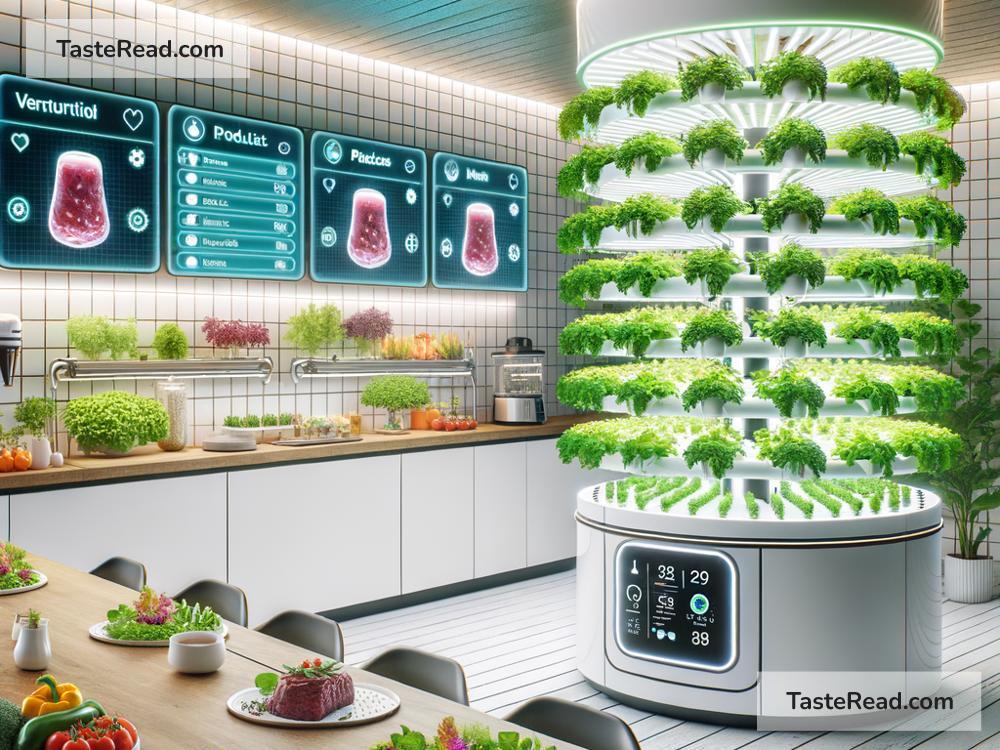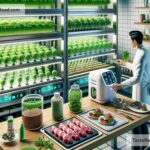The Future of Food and Transformative Systemic Models
Who doesn’t love food? It’s the fuel that keeps us alive and the heart of social gatherings. But while eating might seem simple, the systems behind how food is grown, distributed, and consumed are incredibly complex. Today, we’re at a crossroads. The way we produce and consume food isn’t sustainable. The future of food needs to be transformed, and that’s where systemic models come in. In simpler terms, these are new ways of thinking and organizing food production and delivery that can help us solve big problems.
What’s the Problem with Today’s Food System?
Our current food system has a lot of issues. First, it’s harming the planet. Agriculture contributes to greenhouse gas emissions, deforestation, and soil degradation. The use of chemicals like pesticides and fertilizers can damage ecosystems and water supplies. At the same time, food waste is a massive problem. Globally, about one-third of all food produced gets thrown away, even as millions of people face hunger.
Second, our food system isn’t equitable. Many farmers, especially in developing countries, struggle to make a living despite growing the food the world depends on. Meanwhile, wealthy countries often overconsume, leading to health problems like obesity and diabetes. Food distribution is uneven, and that’s a challenge we urgently need to fix.
Lastly, there’s the issue of resilience. Events like climate change, natural disasters, and economic crises are making it harder to grow and deliver food reliably. Supply chain disruptions during the COVID-19 pandemic showed how fragile the system can be.
The way we currently produce and consume food simply can’t support a growing global population while protecting the planet and ensuring fairness. That’s why transformative changes are needed.
What Does the Future of Food Look Like?
Luckily, experts, scientists, and communities are working on innovative solutions to create a better food system. Here are some ideas for the future of food:
-
Sustainable Agriculture: Farming methods that protect the environment are the way forward. Practices like regenerative farming aim to restore soil health, capture carbon, and improve biodiversity. Precision agriculture uses technology like drones and sensors to make farming more efficient, reducing waste and environmental damage.
-
Alternative Proteins: As global demand for meat grows, we need to find more sustainable protein sources. Plant-based meat alternatives and lab-grown meat are becoming increasingly popular. These options use fewer resources and produce less greenhouse gas compared to traditional livestock farming.
-
Reducing Food Waste: Innovations are helping reduce food waste both at home and in supply chains. Smart fridges and apps can remind people to use food before it goes bad. Improved logistics systems can ensure surplus food is distributed to those in need rather than thrown away.
-
Climate-Resilient Crops: Scientists are developing crops that can thrive under extreme weather conditions, like drought-resistant wheat or flood-tolerant rice. These crops can help farmers adapt to the challenges of climate change.
-
Urban Farming: Cities are becoming centers for growing food. Vertical farms and rooftop gardens maximize small spaces to produce fresh, local food. Urban farming not only reduces the need for transportation but also inspires communities to reconnect with their food.
-
Local and Circular Systems: Moving away from centralized food systems toward local, community-based systems can make a big impact. Circular systems recycle resources within the food chain to reduce waste. For example, food scraps could be used to create compost for farms, creating a closed-loop system.
Transformative Systemic Models
To address food challenges at a deeper level, we need systemic models. A systemic model doesn’t just look at one part of the food chain — it considers how all the parts work together. Here are some examples:
-
Food as a Right: A transformative model starts with the belief that food is a basic human right. Policies could prioritize feeding everyone over making profits. Community kitchens, universal access to healthy food, and government-supported programs could become part of this approach.
-
Agroecology: This is an approach to farming that mimics natural ecosystems. It doesn’t just look at crops—it also considers things like soil, water, insects, and even local communities. Agroecology works together with nature instead of against it, making food systems more sustainable in the long run.
-
Decentralization: The current food system often depends on long supply chains. For example, apples grown in one country might travel halfway around the world before reaching a store. Decentralized systems focus on local food production and distribution, which reduces environmental impact and strengthens community bonds.
-
Data and Technology: Better data can lead to smarter decisions. Imagine farmers getting real-time weather updates to plan their harvests or using artificial intelligence to optimize irrigation systems. Technology can also connect consumers with nearby farmers, making food systems more efficient.
-
Education and Behavior Change: Transforming the food system requires changes in how we think about food. Schools, campaigns, and media can teach people about eating sustainably, buying local produce, and reducing waste. When consumers demand change, industries are more likely to adapt.
What Can You Do?
The future of food won’t come from big corporations or governments alone—it needs all of us. Here are simple ways to contribute:
- Eat a more plant-based diet. Even one meat-free meal a week makes a difference.
- Support local farmers or buy from farmers’ markets.
- Reduce food waste by planning meals and using leftovers.
- Learn about food sustainability and share that knowledge.
- Advocate for policies that prioritize healthy and fair food systems.
Conclusion
The future of food is at a turning point. To feed the world in a way that’s fair, sustainable, and resilient, we need transformative systemic models and innovative solutions. From climate-smart farming to local food systems, a better future is possible—but only if we work together. Whether you’re a farmer, scientist, policymaker, or just someone who enjoys a good meal, your actions matter. Let’s shape a food system that nourishes people and the planet for generations to come.


